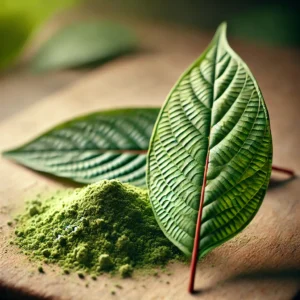Your Ultimate Kratom Guide
Welcome to Your Ultimate Kratom Guide
Kratom, a remarkable plant rooted in the traditions of Southeast Asia, has been an integral part of local cultures for centuries. Today, its unique properties and versatility have captured the attention of enthusiasts worldwide. Available in various forms, including capsules, teas, extracts, and edibles, kratom offers something for everyone.
At Blissful Botanicals, we understand that finding reliable information about kratom can be challenging. That’s why our team of experts has compiled this comprehensive guide. Whether you’re new to kratom or a seasoned user, this resource will provide everything you need to know. Let’s dive in!
What is Kratom?
Kratom, scientifically known as Mitragyna speciosa, is an evergreen tree native to Southeast Asia. The leaves of this tree are harvested and processed into powders, extracts, and other forms. These leaves contain a rich spectrum of alkaloids, which contribute to kratom’s distinct properties and effects.

A Brief History of Kratom
The use of kratom dates back to ancient times, deeply embedded in the cultural practices of Southeast Asia. Indigenous communities utilized kratom for its medicinal, recreational, spiritual, and productivity-enhancing benefits. Fresh leaves were often chewed, while dried leaves were crushed for brewing tea or smoking.

Understanding Alkaloids
Alkaloids are nitrogen-containing organic compounds that play a significant role in kratom’s effects. Two primary active alkaloids are essential to understanding kratom’s unique characteristics:
– Mitragynine: Mitragynine is one of the most abundant alkaloids in kratom leaves. It acts as a moderate μ-opioid agonist, binding with μ-opioid receptors in the body.
– 7-Hydroxymitragynine (7-HMG): A metabolite of mitragynine, 7-HMG is a more potent μ-opioid agonist. Research suggests it plays a key role in kratom’s effects.
These alkaloids, along with dozens of others, work synergistically to create kratom’s overall impact. Additional metabolites, such as mitragynine pseudoindoxyl, emerge during the body’s processing of kratom, further enhancing its effects.
Kratom Strains: Vein Colors and Regions
Kratom strains are categorized based on two key factors: vein color and the region where they are cultivated.
Vein Colors:
The color of kratom veins—white, green, or red—reflects the stage of the leaf’s life cycle during harvest. Each vein color is associated with unique alkaloid profiles and experiences:
– White Vein: Known for uplifting and energizing properties.
– Green Vein: Often associated with balanced, moderate effects.
– Red Vein: Typically linked to relaxation and a sense of calm.
Stay tuned as we explore more about the various strains and their origins in the next section of this guide.
This guide is designed to help you make informed decisions about kratom and its uses. Explore the fascinating history, science, and variety behind this extraordinary plant, and let Blissful Botanicals be your trusted resource.
